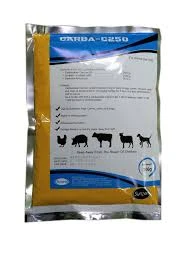- Afrikaans
- Albanian
- Amharic
- Arabic
- Armenian
- Azerbaijani
- Basque
- Belarusian
- Bengali
- Bosnian
- Bulgarian
- Catalan
- Cebuano
- Corsican
- Croatian
- Czech
- Danish
- Dutch
- English
- Esperanto
- Estonian
- Finnish
- French
- Frisian
- Galician
- Georgian
- German
- Greek
- Gujarati
- Haitian Creole
- hausa
- hawaiian
- Hebrew
- Hindi
- Miao
- Hungarian
- Icelandic
- igbo
- Indonesian
- irish
- Italian
- Japanese
- Javanese
- Kannada
- kazakh
- Khmer
- Rwandese
- Korean
- Kurdish
- Kyrgyz
- Lao
- Latin
- Latvian
- Lithuanian
- Luxembourgish
- Macedonian
- Malgashi
- Malay
- Malayalam
- Maltese
- Maori
- Marathi
- Mongolian
- Myanmar
- Nepali
- Norwegian
- Norwegian
- Occitan
- Pashto
- Persian
- Polish
- Portuguese
- Punjabi
- Romanian
- Russian
- Samoan
- Scottish Gaelic
- Serbian
- Sesotho
- Shona
- Sindhi
- Sinhala
- Slovak
- Slovenian
- Somali
- Spanish
- Sundanese
- Swahili
- Swedish
- Tagalog
- Tajik
- Tamil
- Tatar
- Telugu
- Thai
- Turkish
- Turkmen
- Ukrainian
- Urdu
- Uighur
- Uzbek
- Vietnamese
- Welsh
- Bantu
- Yiddish
- Yoruba
- Zulu
Дек . 25, 2024 02:46 Back to list
veterinary antibiotics classification pdf
Understanding the Classification of Veterinary Antibiotics
Antibiotics play a crucial role in veterinary medicine, providing essential treatments for various bacterial infections in animals. Given the increasing concerns over antibiotic resistance and the implications for both animal health and public health, it is important to understand how veterinary antibiotics are classified and used. This classification typically revolves around the spectrum of activity, the mechanism of action, and the chemical structure, which collectively help in guiding appropriate treatment choices in veterinary practice.
1. Spectrum of Activity
Veterinary antibiotics can be broadly classified based on their spectrum of activity into two categories narrow-spectrum and broad-spectrum antibiotics.
- Narrow-Spectrum Antibiotics These antibiotics are effective against specific types of bacteria. For example, Penicillin is primarily effective against Gram-positive bacteria. The targeted action helps minimize disruption to beneficial bacteria in the animal's microbiome, thereby reducing the risk of developing resistance. - Broad-Spectrum Antibiotics In contrast, broad-spectrum antibiotics can target a wide range of bacteria, including both Gram-positive and Gram-negative organisms. This class includes drugs like tetracyclines and sulfonamides. While broad-spectrum antibiotics can be crucial in treating severe infections when the causative agent is unknown, their overuse can contribute to antibiotic resistance.
2. Mechanism of Action
The classification based on the mechanism of action focuses on how these antibiotics inhibit bacterial growth or kill bacteria. Major mechanisms include
- Inhibition of Cell Wall Synthesis Antibiotics like penicillins and cephalosporins disrupt the formation of the bacterial cell wall, leading to cell lysis and death. These antibiotics are effective primarily against actively dividing bacteria.
- Inhibition of Protein Synthesis Antibiotics such as tetracyclines and macrolides disrupt the bacterial ribosomes, interfering with protein synthesis. This action prevents bacteria from growing and reproducing.
- Inhibition of Nucleic Acid Synthesis Drugs like fluoroquinolones interfere with DNA replication and repair mechanisms in bacteria, which leads to cell death
. This class of antibiotics has a broad spectrum of activity and is often employed for treating serious infections.veterinary antibiotics classification pdf

- Metabolic Pathway Inhibition Sulfonamides act as antimetabolites, blocking the synthesis of folic acid in bacteria, thereby inhibiting their growth. This class exemplifies the essential role of metabolic processes in bacterial viability.
3. Chemical Structure
Another way to classify veterinary antibiotics is based on their chemical structure, which often correlates with their microbiological properties. Some significant classes include
- Beta-lactams This group, which includes penicillins and cephalosporins, is characterized by a beta-lactam ring in their chemical structure. They are widely used in both livestock and companion animals.
- Aminoglycosides This group includes antibiotics such as gentamicin and neomycin. These are often used to treat serious infections due to their potent effects, albeit with a higher risk of toxicity.
- Tetracyclines Recognized for their broad-spectrum activity, tetracyclines are characterized by a four-ring structure. They are commonly used for respiratory and enteric infections.
- Macrolides Deriving their name from the presence of a macrocyclic lactone, this group includes drugs like erythromycin and azithromycin, widely utilized for treating respiratory diseases in livestock.
Conclusion
The classification of veterinary antibiotics is multifaceted, encompassing aspects of the spectrum of activity, mechanisms of action, and chemical structures. A thorough understanding of these classifications not only aids veterinarians in selecting the most appropriate antibiotic treatment, but it also emphasizes the necessity for responsible use of these medications. As antibiotic resistance becomes an increasingly pressing concern, both veterinary and humane practitioners must remain vigilant to ensure antibiotics are used judiciously, promoting animal health while safeguarding public health. In the contemporary landscape of veterinary medicine, informed and responsible antibiotic use is paramount in the fight against antibiotic resistance.
-
Guide to Oxytetracycline Injection
NewsMar.27,2025
-
Guide to Colistin Sulphate
NewsMar.27,2025
-
Gentamicin Sulfate: Uses, Price, And Key Information
NewsMar.27,2025
-
Enrofloxacin Injection: Uses, Price, And Supplier Information
NewsMar.27,2025
-
Dexamethasone Sodium Phosphate Injection: Uses, Price, And Key Information
NewsMar.27,2025
-
Albendazole Tablet: Uses, Dosage, Cost, And Key Information
NewsMar.27,2025













